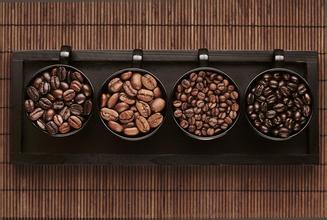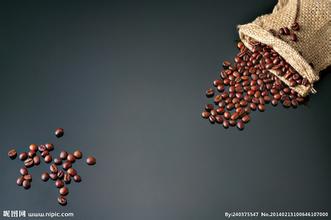Introduction to the Flavor description treatment of Ramon Coffee Bean in Colombia
Flavor Description of Colombia Ramon Coffee Processing Variety Characteristics Introduction to the region of origin
Colombia is rich in products, especially coffee, flowers, gold and emeralds known as the "four treasures." Coffee was first introduced to Colombia in 1808 by a priest from the French Antilles via Venezuela. Today the country is the second largest coffee producer after Brazil, the world's largest exporter of Arabica coffee beans and the world's largest exporter of washed coffee beans. Often described as having a silky texture, Colombia coffee has the best balance of all coffees. It tastes soft, silky, and ready to drink, and it has earned a reputation that no other coffee can match: "green gold."
There are two series of coffee in the world, one is "hard" coffee represented by Brazil, which tastes strong; the other is "soft" coffee represented by Colombia, which tastes light. The difference lies in the altitude of the origin and the planting method. Brazil will plant coffee in hilly red soil more extensively, while Colombia will produce coffee in mountainous black soil intensive cultivation. Colombia Premium has a rich, rich aroma with a clear, high-quality acidity, high balance, and sometimes nutty notes that leave a lingering aftertaste. Colombia Premium is excellent in appearance and quality, just like a woman's subtle charm, charming and just right, making people miss it
Many areas of Colombia are between 1200 and 1800 meters above sea level, with annual rainfall of about 2000 mm, sufficient sunshine and rainfall for coffee growth. But in recent years Jos Ramón Corazos, who lives in the southern province of Huila, has found that his plantations are producing less coffee, the most important factor being global climate change. The rainy season is getting longer and less light, posing a serious threat to coffee growth. The increase in rain also prompted a large number of wild fungi to reproduce,"grabbing" the growth space of coffee trees. In response, scientists have genetically bred eight new varieties of coffee trees, hoping that Colombia's annual coffee production will reach 15 million bags in the next four years. Colombia is a major coffee producer and exporter in the world. Coffee is the third largest export product of Colombia. Colombia produced 8.9 million bags of coffee in 2010 and 7.8 million bags in 2009, both below the average annual production of 11 to 12 million bags. In order to increase production, 80,000 hectares of coffee tree varieties were renewed in Colombia in 2010 and the target for 2011 was 100,000 hectares. In 2013, Colombia's coffee production surpassed Indonesia and returned to third place in the world, behind Brazil and Vietnam

Important Notice :
前街咖啡 FrontStreet Coffee has moved to new addredd:
FrontStreet Coffee Address: 315,Donghua East Road,GuangZhou
Tel:020 38364473
- Prev

Introduction to the characteristics of varieties and producing areas of coffee beans in Honduras
Variety characteristics of Honduran Coffee Bean Flavor description and production area introduction of Honduran national flower carnation (Carnation family), carnation (scientific name: Dianthus caryophyllus) is carnation, also known as lion head carnation, musk carnation, carnation, Dutch carnation. It belongs to Caryophyllaceae and Dianthus, distributed in temperate zone of Europe and Chinese mainland in Fujian, Hubei and other places.
- Next

Panama Poquet Valley Coffee Bean Flavor Description Processing Quality Taste Characteristics Introduction
Basic information of Poquet classic coffee beans: local basic climate: rainy season May-December, dry season January-April Soil characteristics: volcanic soil Green bean treatment method: full washing, sun drying or machine drying Green bean grade: SHB Very hard beans Coffee varieties: iron pickup, kadura, kaduai, bourbon Harvest and export time: October-December Harvest, November-May Export cup test characteristics: sweet sense
Related
- Detailed explanation of Jadeite planting Land in Panamanian Jadeite Manor introduction to the grading system of Jadeite competitive bidding, Red bid, Green bid and Rose Summer
- Story of Coffee planting in Brenka region of Costa Rica Stonehenge Manor anaerobic heavy honey treatment of flavor mouth
- What's on the barrel of Blue Mountain Coffee beans?
- Can American coffee also pull flowers? How to use hot American style to pull out a good-looking pattern?
- Can you make a cold extract with coffee beans? What is the right proportion for cold-extracted coffee formula?
- Indonesian PWN Gold Mandrine Coffee Origin Features Flavor How to Chong? Mandolin coffee is American.
- A brief introduction to the flavor characteristics of Brazilian yellow bourbon coffee beans
- What is the effect of different water quality on the flavor of cold-extracted coffee? What kind of water is best for brewing coffee?
- Why do you think of Rose Summer whenever you mention Panamanian coffee?
- Introduction to the characteristics of authentic blue mountain coffee bean producing areas? What is the CIB Coffee Authority in Jamaica?

